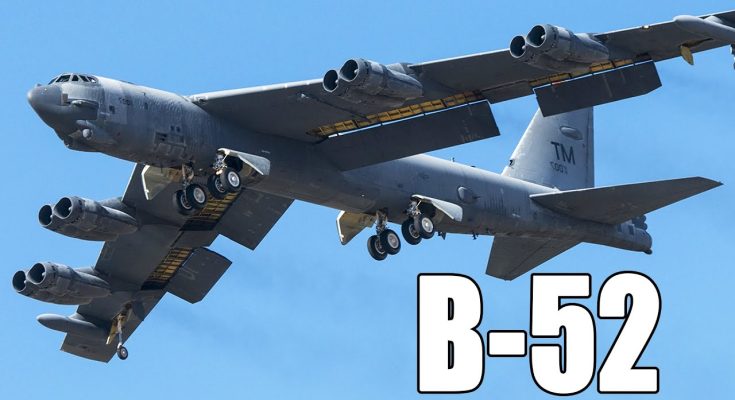The Boeing B-52 Stratofortress is one of the most iconic and enduring aircraft in the history of aviation. With its imposing eight-engine design, it has become a symbol of U.S. air power and has played a central role in both Cold War and modern military operations. The B-52’s story is a testament to the power of strategic bomber capabilities, adaptability, and longevity in an era of rapidly advancing technology.
Origins and Development
The B-52 was developed during the Cold War in the late 1940s and early 1950s. The U.S. Air Force required a long-range strategic bomber capable of carrying large payloads of nuclear bombs deep into enemy territory. Boeing was tasked with designing an aircraft that could carry a massive payload over long distances at high speeds while remaining highly maneuverable and survivable in hostile airspace.
In 1952, Boeing’s engineers, led by Ed Heinemann, began developing what would become the B-52 Stratofortress. The aircraft made its first flight in 1952, and after a series of rigorous tests, the B-52 entered service in 1955. Its design was revolutionary at the time: a high-wing aircraft with eight jet engines, which provided incredible power and speed. The B-52 was capable of flying long distances at altitudes that allowed it to avoid some of the early radar detection systems of the time. Its range and payload capacity made it the ideal weapon for the U.S. strategic nuclear deterrent.
The B-52’s Eight Engines
The most distinctive feature of the B-52 is its eight engines, mounted on four pylons under the wings. These engines are Pratt & Whitney TF33 turbofan engines, which give the aircraft a high thrust-to-weight ratio, allowing it to reach speeds of over 600 miles per hour and altitudes up to 50,000 feet. The B-52’s eight engines allow it to carry a large payload of up to 70,000 pounds of bombs, missiles, and other ordnance over 8,800 miles without refueling.
The presence of eight engines also grants the aircraft tremendous redundancy. If one or even two engines fail, the B-52 can still fly with little to no disruption to its mission. This reliability is one of the key reasons why the aircraft has been able to remain in service for over six decades, despite advances in aviation technology and changes in warfare.
Cold War and Beyond
During the Cold War, the B-52 played a pivotal role as part of the U.S. nuclear triad, a system designed to ensure the ability to strike adversaries even after a first strike. The bomber was capable of carrying both nuclear and conventional weapons, including the powerful AGM-86 Air-Launched Cruise Missiles (ALCMs). Throughout the Cold War, the B-52’s ability to penetrate Soviet air defenses and deliver nuclear payloads at long range made it a cornerstone of U.S. deterrence strategy.
The B-52 has been involved in many conflicts since the Cold War, proving its versatility as a strategic bomber capable of performing a wide range of missions. It was used extensively during the Vietnam War, providing close air support and precision strikes. It also played significant roles in Desert Storm and Operation Iraqi Freedom, where its long-range bombing capabilities were used to destroy high-value targets with great precision.
The B-52 Today
Even as more advanced bombers, such as the B-2 Spirit and B-21 Raider, join the U.S. Air Force, the B-52 remains in active service due to its unmatched ability to adapt to modern technologies. Over the years, the aircraft has undergone numerous upgrades, including the replacement of its original engines with the more efficient Pratt & Whitney F119-PW-100 engines, improved avionics, and better weapons systems. These updates ensure that the B-52 remains relevant in modern warfare, where precision, range, and flexibility are crucial.
The B-52 Stratofortress is expected to remain in service until at least 2050, making it one of the longest-serving military aircraft in history. Despite its age, the B-52 is still a formidable platform for strategic deterrence, global strike, and surveillance missions. Its ability to carry a wide range of weapons and integrate with modern technology makes it a reliable and versatile part of the U.S. Air Force’s bomber fleet.
Conclusion
The Boeing B-52 Stratofortress is more than just a bomber; it is a symbol of the U.S. Air Force’s power and resilience. With its eight engines, massive payload capacity, and ability to evolve with the times, the B-52 has cemented its place as one of the most important military aircraft ever built. Its enduring service is a testament to its design and adaptability, and as the U.S. Air Force continues to rely on it well into the future, the B-52’s legacy is far from over.



